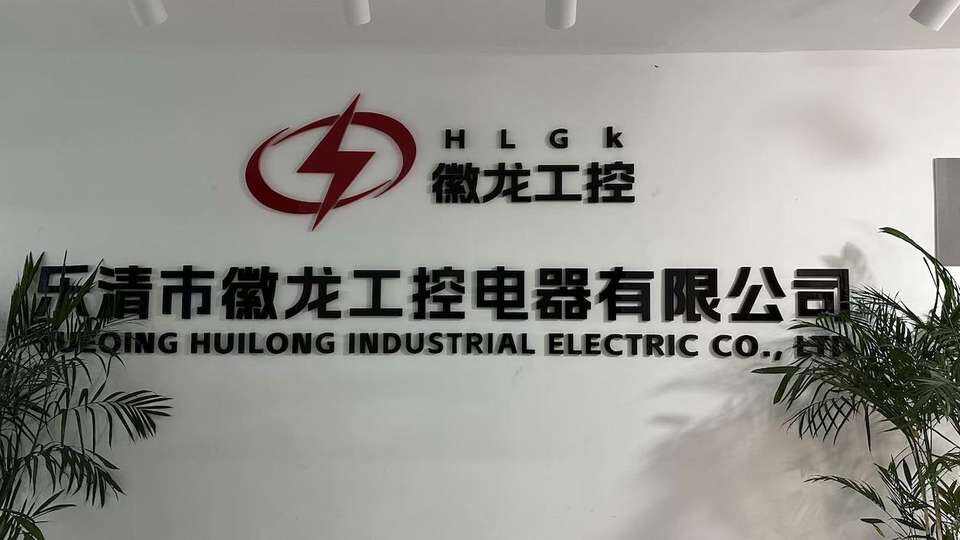Core Components and Working Mechanism of Emergency Stop Safety Rope Switches
Basic Components: Rope, Actuator, and Contacts
Emergency top safety rope switches are integral safety components that consist mainly of the rope, actuator, and contacts. The rope functions as a pull-activated device initiating an emergency stop when drawn. When a user pulls the rope, the actuator translates this mechanical action into an electrical signal. This signal activates the contact mechanism, leading to an interruption of the system's power flow. Understanding these components is essential for any industrial safety system, as each plays a crucial role in ensuring the effective operation and safety control of machinery during emergency situations. The proper design and implementation of these elements help mitigate risks in industrial environments.
Activation Mechanism: Pull-Rope Tension and Circuit Interruption
The activation mechanism of emergency stop safety rope switches centers on detecting pull-rope tension, which links directly to the circuit interruption system, ensuring the immediate stoppage of machinery. Regular testing and maintenance of the pull-rope system are paramount. Research indicates that a well-maintained setup can reduce false activations by up to 30%. This precise control of pull-rope tension and understanding its significance for operator safety underscores the importance of incorporating robust preventative practices in risk management strategies.
Latching and Reset Functions Explained
The latching functionality locks the emergency stop switch in a fail-safe stop state until manually reset, playing a vital role in enhancing safety during critical operations. The reset function, on the other hand, allows operators to restore the system to its functional status. Thus, it is crucial that reset mechanisms are straightforward and reliable. Training personnel in handling latching and reset protocols is of utmost importance; incorrect processes can lead to accidents in emergencies, highlighting the significance of thorough safety training in industrial settings.
Types of Safety Switches: Integration with Travel Limit and Micro Limit Systems
Travel Limit Switch Integration for Conveyor Systems
Travel limit switches play a crucial role in conveyor systems by providing precise control over movement and ensuring operational safety. By integrating these switches with emergency stop safety rope switches, we can automatically halt the system when predefined limits are reached. This integration is particularly effective in reducing the risk of accidents and enhancing workflow efficiency. Additionally, it minimizes downtime, enabling continuous and safe operations in industrial environments.
Role of Micro Limit Switches in Precision Control
Micro limit switches are indispensable in applications where precision is paramount. These switches provide exact stop points for machinery, safeguarding against over-travel, which is critical in maintaining system integrity. Utilizing micro limit switches in tandem with emergency stop safety systems is vital in areas such as robotics, where precise positioning is key. Industry findings highlight that incorporating micro limit switches can improve operational accuracy by up to 25%, thereby enhancing overall system performance.
Safety Interlock and Door Switches for Access Control
Safety interlock and door switches are essential for maintaining safe machinery operations, especially when access to dangerous areas is involved. These switches prevent accidents by ensuring that machinery stops when doors are opened, thus protecting personnel. When combined with emergency stop safety rope switches, they create a multi-layered protective system, crucial for operating in hazardous environments. Documented data shows that installations with interlock and door switches experience significantly lower incident rates compared to those without, emphasizing their importance in accident prevention.
Safety systems such as travel limit switches, micro limit switches, and safety interlock switches work collectively with emergency stop features to provide comprehensive protection and efficiency in diverse industrial applications. By understanding and utilizing these mechanisms, businesses can enhance both safety measures and operational precision.
Key Applications in Industrial Safety Systems
Conveyor Belt Emergency Shutdowns
Emergency stop safety rope switches play a crucial role in conveyor belt systems by enabling rapid shutdowns during emergencies, significantly boosting worker safety. These switches are not just an added feature but a necessity, given the potential hazards associated with conveyor operations. According to safety regulatory guidelines, implementing these switches can lead to a notable 40% reduction in accident rates related to machinery. It's vital for companies to ensure employees are well-versed in emergency shutdown procedures through regular training and planned drills, ensuring readiness when swift action is required.
Robotic Cell Safety Protocols
In robotic cell environments, where human-machine interaction is commonplace, emergency stop safety switches act as vital protectors against potential errors. Proper integration of these safety switches can effectively lower injury incidents associated with robotic operations, as highlighted by numerous case studies. Adopting strict safety protocols and maintaining easy access to these switches are essential elements of ensuring the overall safety of robotic systems. This not only safeguards human operators but also secures the efficiency and reliability of robotic tasks.
Hazardous Material Handling Scenarios
In environments dealing with hazardous materials, emergency stop safety switches are indispensable. They allow for immediate responses during leaks or spills, crucially minimizing the potential for disaster. Regulations often mandate the inclusion of safety rope switches in such settings, highlighting their importance in ensuring a safe work environment. Equipping personnel with thorough training in emergency procedures for hazardous material handling not only prevents unwanted incidents but also saves lives. This is a fundamental part of any robust safety framework in industries handling toxic substances.
Compliance with ISO 13850 and Other Safety Standards
Performance Level Requirements (PLr) for Emergency Stops
ISO 13850 specifies crucial performance levels for emergency stop systems to maintain effective safety measures in work environments. These Performance Level Requirements (PLr) govern how safety switches must react during emergencies, significantly influencing workplace safety. Ensuring compliance with these standards is not just about adhering to regulations; it's essential for preventing accidents and showcasing a company's commitment to safeguarding employees.
Span of Control Principles in Multi-Machine Systems
Managing the span of control is pivotal when dealing with multi-machine systems to avoid overlooking safety measures. Evaluating emergency stop configurations within these contexts is necessary to ensure they align with established safety practices. Best practices advise limiting the number of machines under a single operator's control, ensuring that safety isn't compromised and every machine is appropriately monitored for potential hazards.
Color Coding and Actuator Design Mandates
ISO standards mandate specific color coding for emergency stop actuators, which is instrumental in swiftly identifying them during crises. Proper actuator designs not only enhance usability but also reduce confusion, markedly improving the safety of handling machinery. Research indicates that clear color coding can speed up response times in emergencies, a critical factor in accident prevention, thereby reinforcing ISO compliance in design and operational protocols.
Common Operational Challenges and Maintenance Best Practices
False Activation Prevention Strategies
Preventing false activations of emergency stop safety rope switches is crucial for maintaining operational integrity and safety. False activations can lead to unnecessary downtime and increased operational costs. To mitigate this issue, implementing protective measures such as shock absorbers or protective covers is vital. These additions help minimize accidental activations caused by unintended contact or environmental factors. Furthermore, regularly reviewing switching conditions and conducting thorough maintenance checks can significantly help. This proactive approach ensures that switches remain responsive only to actual emergencies, enhancing overall safety and efficiency.
Weatherproofing for Outdoor Installations
Weatherproofing safety switches in outdoor installations is essential to ensure their durability and reliability across varying environmental conditions. Utilizing weather-resistant materials not only extends the life of the switch but is also critical for maintaining consistent operational continuity. Assessments of outdoor equipment consistently show that failures due to environmental factors can be considerably reduced by implementing proper protection measures, such as enclosures and seals. By investing in weatherproofing, businesses safeguard against potential malfunctions, ensuring switches operate optimally regardless of weather conditions.
Periodic Testing and Contact Reliability Checks
Periodic testing of emergency stop safety switches is mandatory to ensure they perform as intended when required, in line with safety guidelines. This involves conducting contact reliability checks to detect potential issues before they escalate into critical failures. By proactively identifying and addressing such concerns, organizations can significantly enhance safety performance—an integral component of their operational strategy. Incorporating these tests into a routine maintenance schedule is essential for adhering to stringent safety standards and ensuring the readiness of emergency stop systems in critical situations.
Table of Contents
- Core Components and Working Mechanism of Emergency Stop Safety Rope Switches
- Types of Safety Switches: Integration with Travel Limit and Micro Limit Systems
- Key Applications in Industrial Safety Systems
- Compliance with ISO 13850 and Other Safety Standards
- Common Operational Challenges and Maintenance Best Practices







